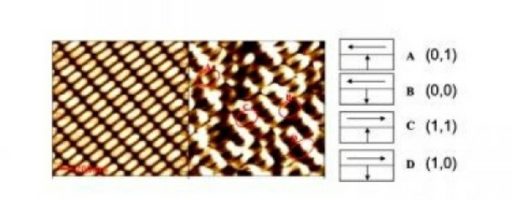It makes a good story to read of miraculous happenings and scientific innovations that are impossible almost to being science-fiction, but what has been done by the scientists regarding breaking Moore’s Law is not a scientific imagination, but a real technological breakthrough. The rebellious saying that goes laws are meant to be broken has come true this time for the domain of science, which holds a very rigid structure of knowledge and approach upon which are built theories, laws and ideas.
This revolutionary law-breaking has been done by creating a working transistor using a single and unitary phosphorus atom, which was etched into a silicon bed with ‘gates’ to manage electrical flow and metallic contacts to apply voltage. The full research on this matter is available in the journal Nature Nanotechnology. It is the first device that has been positioned in such a way which makes it a repeatable technology, hence it is not a one-time-only experiment of a science lab, but something that can further the cause of scientific discovery of quantum computer.
A quantum computer will be much smaller and faster than the ones we have capability to make. According to Moore’s Law, the number of transistors that can be put with an integrated circuit doubles after every 18 months to two years. With the current rate and existing technology it will reach its saturation point in 2020. By using only a single atom, this whole idea loses its ground and there is a loophole through which scientists can manage to conceptualize on this single-atom-transistor idea.
The Moore’s Law is named after Gordon Moore, who in 1965 first presented a report on the subject. Since then it has been cited as such in the scientific community. Gordon Moore was the co-founder of Santa Clara, the California-based Intel Corp., which is the world’s largest chipmaker. About the breakthrough, Michelle Simmons, the director of ARC Center for Quantum Computation and Communication Technology at the University of New South Wales, Australia, has said:
“We really decided 10 years ago to start this program to try and make single-atom devices as fast as we could, and beat that law. So here we are in 2012, and we’ve made a single-atom transistor roughly 8 to 10 years ahead of where the industry is going to be.”
But as with everything having its limit, there are conditions to this single-atom transistor to and it is that the atom must be kept at -391 degrees Fahrenheit to allow it to stay within its channel, which is why at this point in time it is just the proof of the principle and not at all in the manufacturing stage. The research report says:
“These results demonstrate that single-atom devices can in principle be built and controlled with atomically thin wires, where the active component represents the ultimate physical limit of Moore’s Law.”
Hence, there are still some miles to go before the question about the success of quantum computing is fully and satisfactorily answered.
Image source: Digital Trends
[ttjad keyword=”electronic”]




